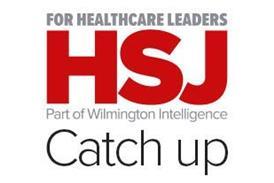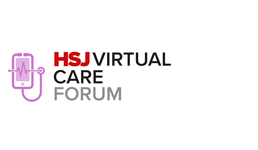Information strategy leaves a gap between rhetoric and reality; and a sore point on nurse registration.
About patients, or for patients?
Like many other organisations we welcome the government’s information strategy and its assertion that information is an essential service in its own right. Health information for patients is a key component of high quality, patient-centred care and we applaud this latest acknowledgment of its importance. Rather than a pure informatics strategy, it clearly recognises that the above ambition is underpinned by culture change. However, we would like to see the rhetoric more fully realised, especially in the action planning elements of the strategy, which focus too much on “information about patients” rather than “information for patients”.
There is also little detail on how this essential service will be integrated into health and social care delivery. Information prescriptions are quoted as an example of good practice, but with the exception of continuing work in cancer, many of the successful pilots have failed to achieve ongoing traction. Even in the context of the legal and professional drivers around “informed consent” and the right to information, there are few audit trails showing what information was given to which patient and with what outcome. Health information services in the NHS are often underfunded and under-resourced and, as a “nice to have” rather than a “must do”, subject to cuts in the present climate.
Yet, the biggest gap between rhetoric and reality is between the desire for commissioners to “recognise the benefits of appropriate information and communication support”, and translating this into dedicated funding for the range of information products and services. Without such recognition and funding from commissioners we will continue to have patchy and inequitable provision of this essential service.
Mark Duman, chair, Patient Information Forum
The interoperability challenge
Improving the safety and quality of healthcare delivery is undoubtedly the shared goal of everyone who works with or within the NHS. After all, it is all about the patient. The Health Act is the latest attempt to pave the way for a patient-centric, integrated care model in the UK. But to get there, and in the process deliver on the longstanding imperatives to improve the safety and quality of care, the NHS must step into the 21st Century in terms of its use of technology.
Delivering a world class integrated care model in the UK, as is the published intent for the direction of the NHS as outlined in the Health Act and the information strategy, will depend heavily upon the ability of health and social care systems to maximise the power of the information they routinely generate. But this requires some joined-up thinking. Sharing information across organisational boundaries in the NHS and social care will depend on the ability of IT systems to talk to one another. To achieve this, the challenge of interoperability must be overcome.
The need for a standards-based, rather than a product-based, approach to interoperability is unequivocal. Companies wishing to supply IT solutions to the NHS must unite around a common data model and a common coding system, and comply with the information standards board outputs that already exist. In truth, most of what is required to develop national standards has already been written. It simply needs to be put in place and be directive enough to make a difference.
But for the NHS, the challenge is not just technological. It is cultural. The health service, driven by the QIPP challenge of making cost savings and quality gains in equal measure, is changing - and NHS professionals need to change with it. Clinicians are increasingly being challenged to become more innovative in the way that they work. As the drive to improve and redesign care pathways gathers momentum, professionals are being asked to reconfigure services so that they are more convenient and patient-centric. But once these new services have been designed, developed and implemented, the true benefits will only be realised when they are underpinned by appropriate technologies to support them.
Those technologies are already there. Using them would ensure that the right information is available for the right person, in the right place and at the right time. And the biggest beneficiary will be the patient.
If the goal to build a high quality, patient-centric integrated care system, with increased safety, is to be achieved, IT must play a vital role at the centre of it. In an NHS battling financial constraints and widespread reorganisation, technology can help to save money and save lives. And that will be better for local health economies, better for the NHS and, most importantly of all, better for the patient.
Professor Michael Thick, vice president, clinical strategy and governance, McKesson
Money for nothing
I found your article on the 58 per cent increase in the Nursing and Midwifery Council annual registration fee very interesting. At a time when all public sector workers have had a pay freeze, our pension contributions are to rise 1.5 per cent and all other healthcare facilities are having their funding cut, because our leading organisation cannot run to budget we must all pay for their incompetence.
I agree with Peter Carter and feel that nurses are under immense pressure to perform for very little pay, and this will not give people an incentive to stay in or join our profession.
Thank you for informing us of this proposal and lets hope it does not go forward, many colleagues feel a monthly direct debit would ease any increase in annual payments. Perhaps this should be suggested to the NMC.
Sarah O’Reilly, ward manager, Peninsula Treatment Centre

























No comments yet